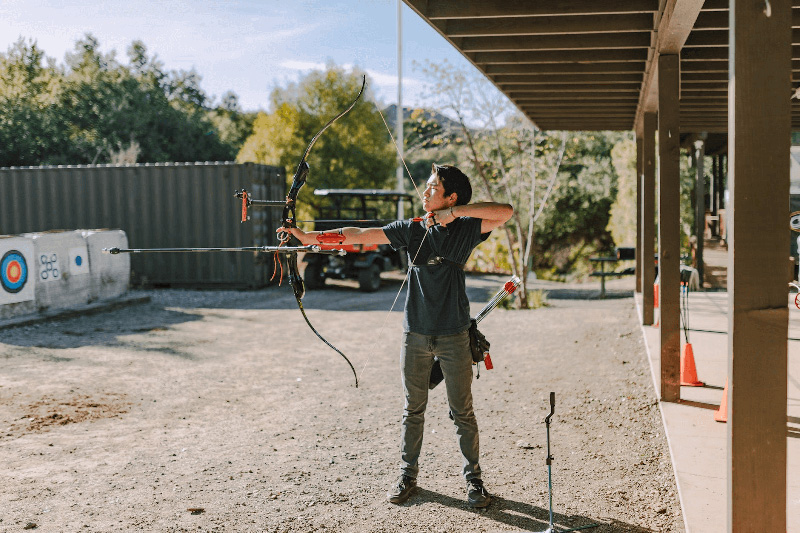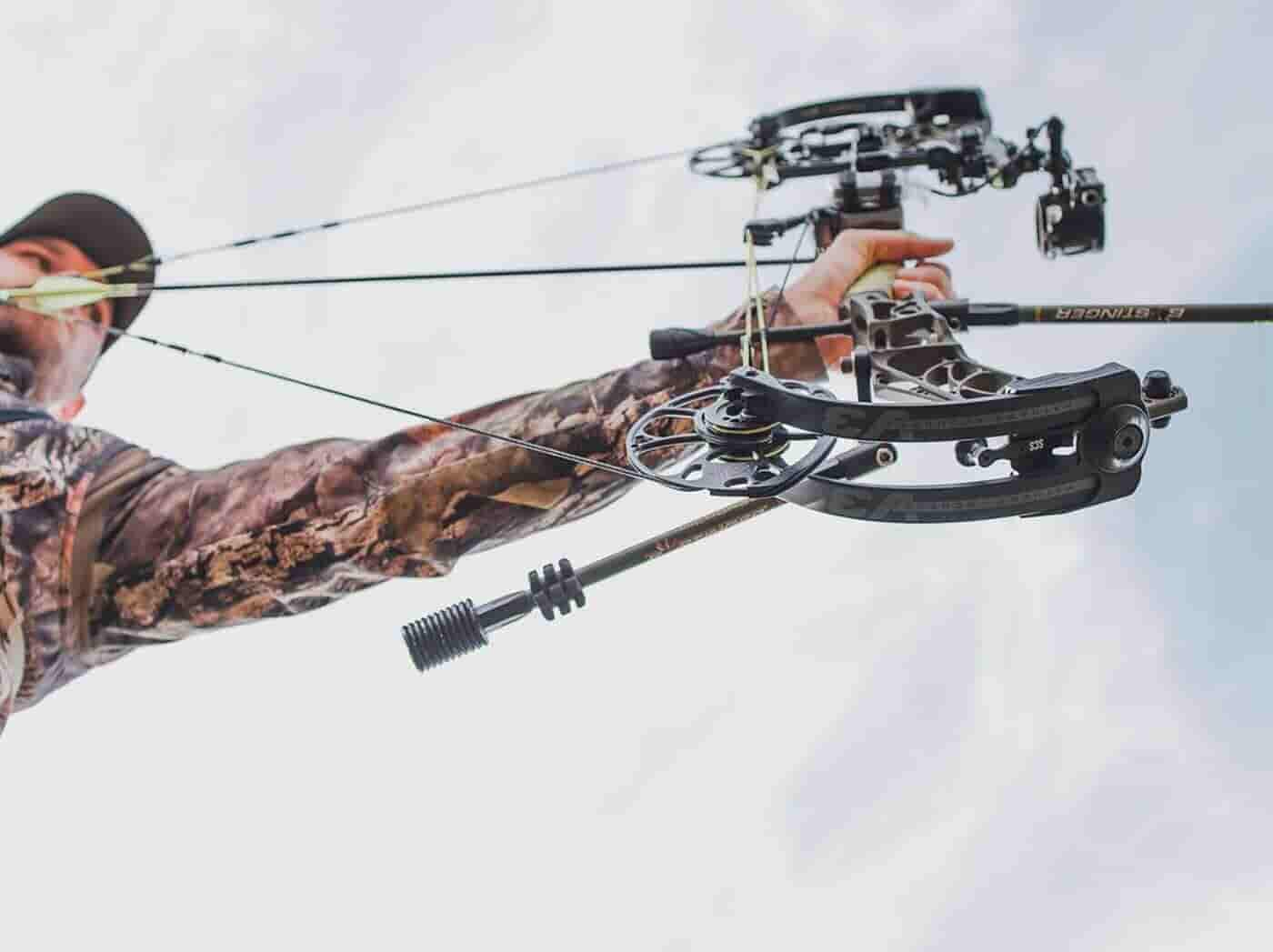Achieve Stability in Your Shot: Comprehending Archery Stabilizers
Achieve Stability in Your Shot: Comprehending Archery Stabilizers
Blog Article
The Ultimate Guide to Selecting the Right Archery Stabilizer for Boosted Accuracy
Archery is a sporting activity that demands accuracy and precision, and choosing the ideal equipment is vital for achieving optimal outcomes. Amongst the various accessories offered, an archery stabilizer plays a substantial role in boosting precision. Nevertheless, with a lot of options on the market, it can be frustrating to establish which stabilizer is the right fit for your requirements. In this thorough overview, we will certainly explore the key elements to think about when picking an archery stabilizer for boosted precision. From locating the optimum size to understanding the different designs and materials, we will look into everything you need to understand to make an informed decision. Whether you are an experienced archer looking to upgrade your equipment or a beginner looking for advice, join us on this journey as we decipher the secrets to picking the excellent archery stabilizer.
Length: Locating the Ideal Stabilizer Length
Figuring out the perfect stabilizer size is essential when picking an archery stabilizer for optimal performance. A stabilizer that is also long can make the bow feel top-heavy and difficult to manage, while a stabilizer that is also short may not give enough stability and dampening of resonances.
A longer stabilizer, typically ranging from 8 to 12 inches, can give greater stability and minimize bow torque. This is specifically advantageous for archers who fire with a high draw weight or those that tend to torque the bow during the shot. The added size aids to disperse the weight evenly and counterbalance any type of torque or motion.
On the various other hand, a much shorter stabilizer, generally between 4 to 7 inches, offers a lot more ability to move and quicker feedback. It is favored by archers who shoot with a lower draw weight or those who need even more flexibility, such as hunters or 3D shooters. The shorter length permits much easier activity via limited rooms and faster adjustments.
Ultimately, the optimal stabilizer length refers individual choice and shooting design. It is advised to trying out various lengths and observe the effects on stability and accuracy. Consulting with knowledgeable archers or experts can additionally give valuable insights and recommendations.
Weight: Identifying the Appropriate Stabilizer Weight
After thinking about the ideal stabilizer size, the following vital variable to take into consideration when picking an archery stabilizer is determining the appropriate stabilizer weight - archery stabilizer. The weight of the stabilizer plays an important function in boosting precision and stability during the shot
The weight of the stabilizer affects the balance and control of the bow. A heavier stabilizer can give enhanced security and control, specifically for shooters with a tendency for irregular shots or unsteady hands. It assists to absorb the vibrations and recoil created by the bow, lowering torque and decreasing the impact on the arrow's trip.
On the various other hand, a lighter stabilizer permits a quicker and much more responsive bow. It can be useful for shooters who prioritize ability to move and speed over stability. Lighter stabilizers additionally decrease fatigue throughout long shooting sessions or competitors.
To figure out the suitable stabilizer weight for your demands, it is necessary to consider your shooting style, physical toughness, and bow configuration. Trying out various weights and observing the influence on your shooting efficiency is essential to finding the excellent balance.
Ultimately, the optimum stabilizer weight will vary for each and every individual archer. It is suggested to begin with a modest weight and make adjustments based on individual preference and capturing outcomes. Keep in mind, the objective is to achieve a controlled and steady shot, while additionally preserving convenience and ease of use.
Products: Selecting the Right Products for Sturdiness and Efficiency
When selecting an archery stabilizer, it is critical to thoroughly take into consideration the materials utilized in its building and construction to ensure toughness and optimize performance. The selection of materials can considerably impact the general quality and efficiency of the stabilizer.
One of one of the most generally used materials for stabilizers is carbon fiber. Carbon fiber uses a high strength-to-weight proportion, making it lightweight yet extremely solid. This product reduces and absorbs resonances bow torque, resulting in improved stability and accuracy. In addition, carbon fiber stabilizers are immune to temperature changes and are less most likely to warp or bend over time.
An additional preferred product for stabilizers is light weight aluminum. Light weight aluminum stabilizers additionally use a large variety of modification alternatives, enabling archers to change the weight and length to match their preferences.
Some stabilizers are constructed making use of a combination of materials. A stabilizer may have a carbon fiber core covered in a light weight aluminum shell. This crossbreed style integrates the most effective qualities of both products, offering optimum security, sturdiness, and performance.
Layout: Comprehending the Various Stabilizer Styles and Their Effects
Taking into consideration the products used in archery stabilizers, it is essential to now delve right into the different layouts of stabilizers and their respective results. The style of an archery visit our website stabilizer plays an essential duty in improving precision and decreasing resonance during the shot. There are numerous different styles readily available out there, each with its very own distinct features.

One more popular style is the side bar stabilizer. This design involves affixing a brief rod sideways of the bow, parallel to the main lengthy rod. Side bar stabilizers aid in reversing the weight of accessories, such as views or quivers, and provide added stability to the bow.
Some stabilizers feature adjustable weights. These stabilizers permit archers to make improvements the balance and feeling of their bows by adding or getting rid of weights. This function is particularly beneficial for archers who favor a certain weight circulation or intend to explore different configurations.
Additionally, some stabilizers include dampening modern technology to reduce resonance and noise. These stabilizers frequently have integrated dampeners or use products that soak up vibrations, leading to a smoother and quieter shot.

Accessories: Checking Out Extra Devices for Improved Security
To even more improve stability in archery, extra devices can be used. These devices are made to operate in combination with the archery stabilizer to provide an even greater level of stability and accuracy. One such accessory is the V-bar or the side stabilizer click reference mount. This accessory enables the accessory of a second stabilizer, which assists to reduce and balance the bow torque. By distributing the weight evenly on both sides of the bow, the V-bar assists to lessen any kind of unwanted movement during the shot.
An additional accessory that can boost stability is a bow sling. A bow sling is a band that connects to the bow and permits the archer to maintain a relaxed grasp on the bow handle without the anxiety of dropping it (archery stabilizer). This loosened up grasp assists to decrease muscle stress and permits a much more consistent and stable shot
Additionally, a stabilizer weight system can be made use of to make improvements the equilibrium and stability of the bow. These weight systems generally contain little weights that can be included or gotten rid of from the stabilizer to change the equilibrium factor of the bow. By finding the optimum balance point, archers can attain a much more stable and precise shot.
Final Thought
In conclusion, choosing the appropriate archery stabilizer involves taking into consideration factors such as length, weight, products, layout, and additional accessories. The ideal stabilizer size and weight will depend on private choices and shooting design.
Identifying the suitable stabilizer size is essential when choosing an archery stabilizer for optimum performance. A stabilizer that is too long can make the bow feel difficult and top-heavy to control, while why not find out more a stabilizer that is as well short might not give enough stability and dampening of resonances - archery stabilizer.Taking right into account the products used in archery stabilizers, it is important to now dive into the various designs of stabilizers and their corresponding results. Side bar stabilizers assist in reversing the weight of accessories, such as sights or quivers, and give extra stability to the bow
These weight systems generally are composed of little weights that can be added or gotten rid of from the stabilizer to readjust the equilibrium factor of the bow.
Report this page